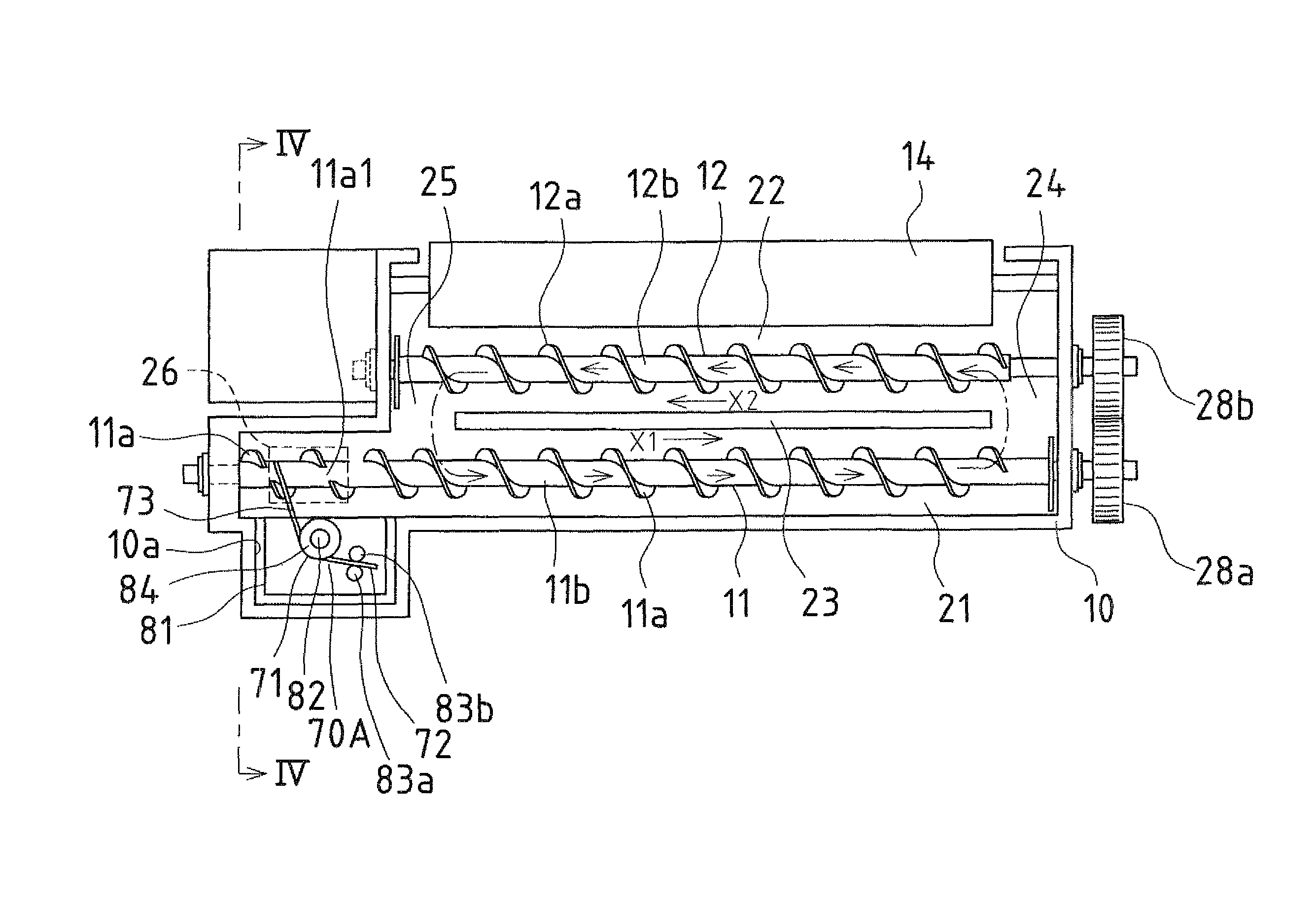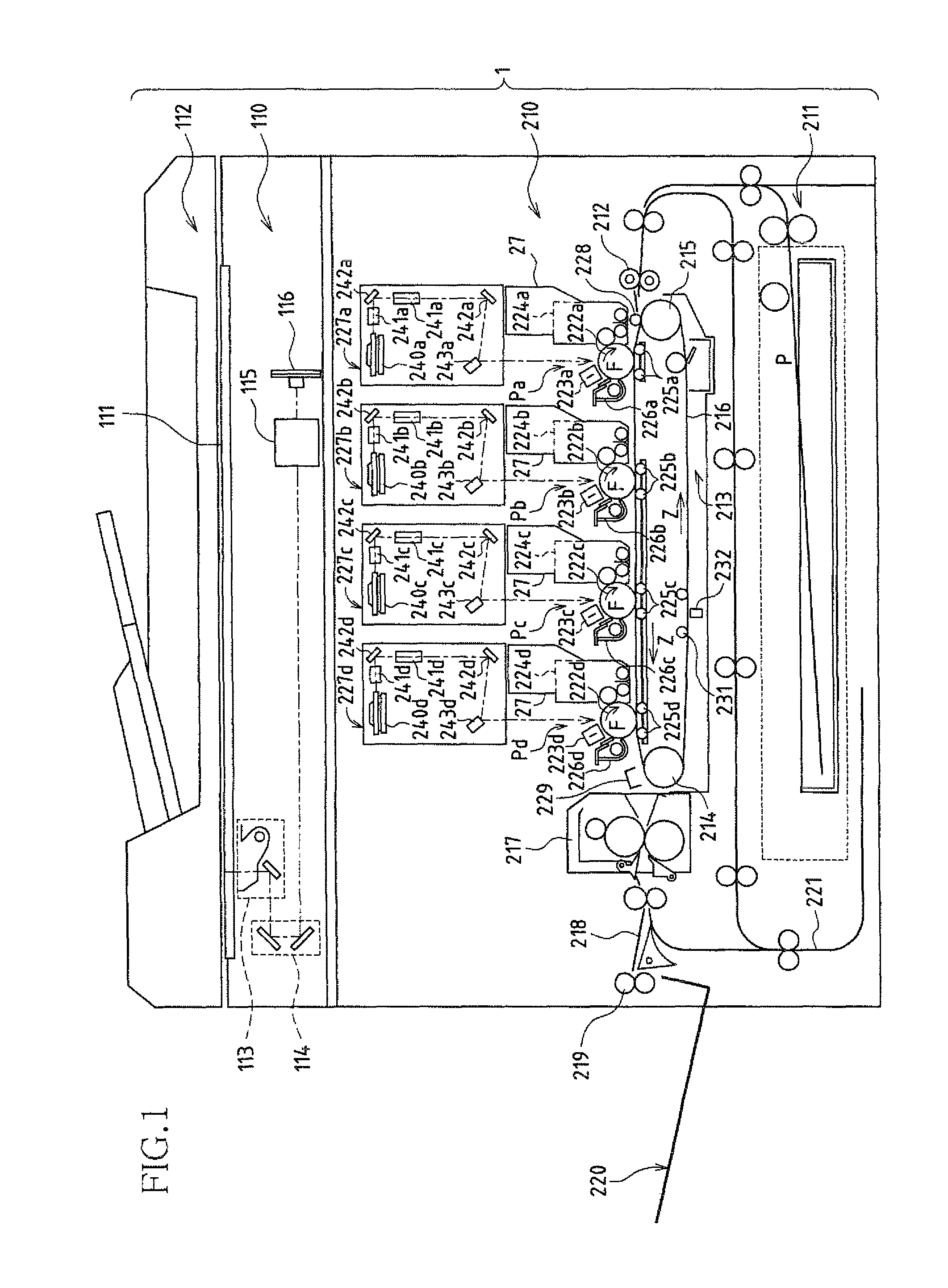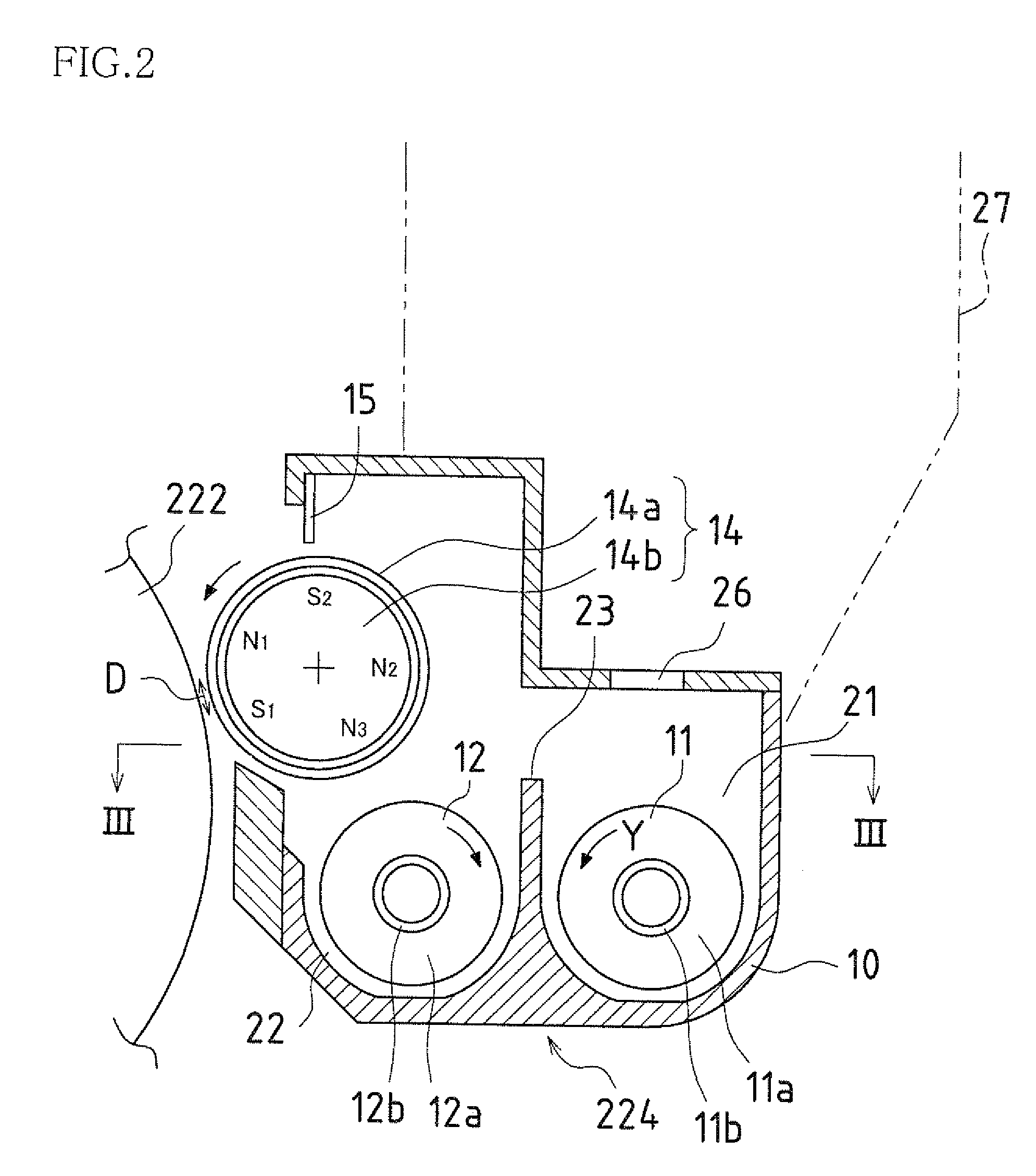Development apparatus and image forming apparatus
a technology of development apparatus and image forming apparatus, which is applied in the direction of electrographic process apparatus, instruments, optics, etc., can solve the problems of increasing the amount of added wax, slow conveying speed of developer, and no action to prevent condensation and affixing, so as to prevent the occurrence of developer, simple configuration, and prolong the life of the development apparatus
- Summary
- Abstract
- Description
- Claims
- Application Information
AI Technical Summary
Benefits of technology
Problems solved by technology
Method used
Image
Examples
embodiment 1
[0081]In Embodiment 1, as shown in FIG. 3, a housing portion 10a that houses the developer affixing prevention member 70 is formed in the case 10 on the left end side of the first screw conveyor 11, and in this housing portion 10a, a support plate 81 is provided in order to support and fix the developer affixing prevention member 70. This support plate 81 is provided extended horizontally from the outside face of the case 10, and on the upper face side thereof, a cylindrical supporting / protruding portion 82 is formed in order to support the developer affixing prevention member 70.
[0082]On the other hand, in Embodiment 1, the developer affixing prevention member 70 is formed with a torsion coil spring 70A formed from the wire rod whose middle is wound in a coil-like shape. As the material that forms the torsion coil spring 70A, it is possible to use, for example, a non-magnetic material such as stainless steel, phosphor bronze, beryllium copper, or aluminum.
[0083]By fitting a winding...
embodiment 2
[0102]Note that in above Embodiment 2, due to the tip end portion 77 side of the plate spring 70B passing by the cut-out portion 11a1, the tip end portion 77 side is instantly restored to its original shape, but the cut-out portion 11a1 is not absolutely necessary. Even when there is no cut-out portion 11a1, due to the tip end portion 77 of the plate spring 70B traveling over the outer circumferential end portion of the fin 11a, instant movement of the tip end portion 77 to the upstream side in the conveying direction X1 is possible. However, in this case, immediately before the tip end portion 77 travels over the outer circumferential end portion of the fin 11a, the side edge 77b of the plate spring 70B and the rotating shaft 11b of the first screw conveyor 11 are temporarily separated, so in consideration of stability of operation, it is preferable that the cut-out portion 11a1 is provided.
[0103]Note that in the above embodiments, a configuration was described in which the develop...
PUM
 Login to View More
Login to View More Abstract
Description
Claims
Application Information
 Login to View More
Login to View More - R&D
- Intellectual Property
- Life Sciences
- Materials
- Tech Scout
- Unparalleled Data Quality
- Higher Quality Content
- 60% Fewer Hallucinations
Browse by: Latest US Patents, China's latest patents, Technical Efficacy Thesaurus, Application Domain, Technology Topic, Popular Technical Reports.
© 2025 PatSnap. All rights reserved.Legal|Privacy policy|Modern Slavery Act Transparency Statement|Sitemap|About US| Contact US: help@patsnap.com



